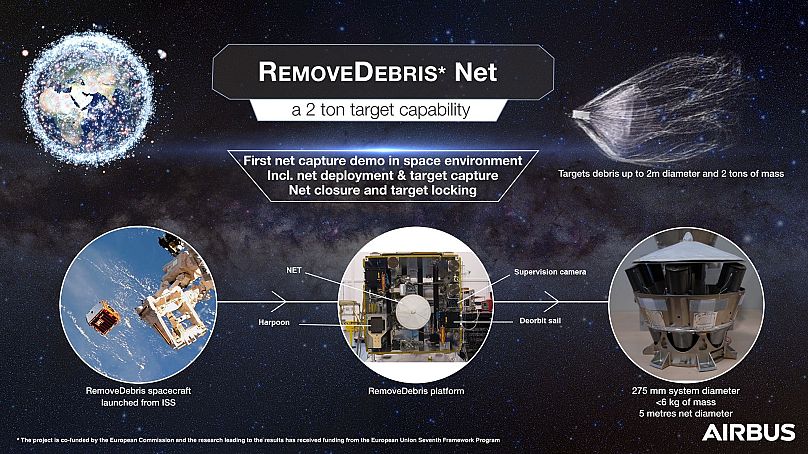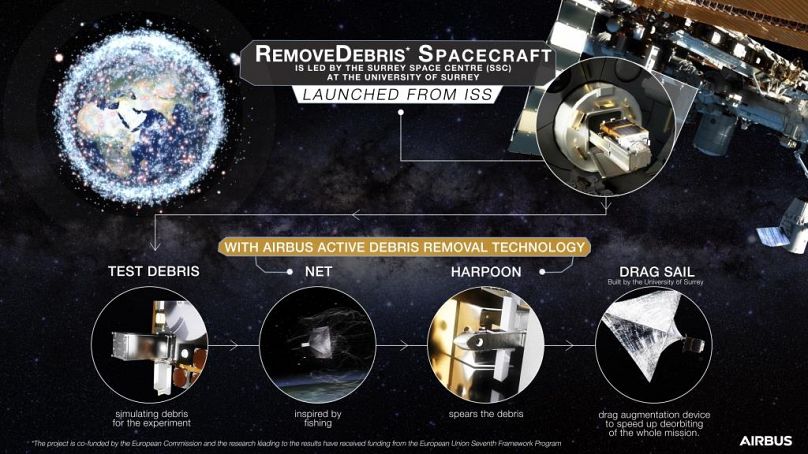Around 7,600 tonnes of debris float around Earth posing a real threat to operational satellites.
RemoveDebris, a small experimental satellite designed to clean up space debris successfully snared its first piece of extraterrestrial pollution — a solar system premiere.
More than 7,600 tonnes of so-called "space junk" floats around Earth — the result of nearly 60 years of space exploration — with some moving faster than a speeding bullet at approximately 48,000 kilmometres per hour (30,000 miles per hour).
The worry is that these 40,000 objects could collide into, and damage, operational satellites.
Built by a consortium of European space companies as well as researchers from the University of Surrey in the UK, the satellite, financed in part by the European Commission, was launched into orbit from the International Space Station in June.
Cleaning up
The test, conducted on Sunday, saw RemoveDebris capture a deployed target simulating a piece of space debris by ensnaring it in a net. The net and its bounty are now expected to plummet towards Earth's atmosphere were they will burn up.
"We are absolutely delighted with the outcome of the net technology," Guglielmo Aglietti, director of the Surrey Space Centre, said in a statement.
"While it might sound like a simple idea, the complexity of using a net in space to capture a piece of debris took many years of planning, engineering and coordination between the Surrey Space Centre, Airbus and our partners — but there is more work to be done," he added.
A new camera system to track debris as well as a harpoon will be tested over the coming months.
Once the tests are completed, a drag-sail — a lightweight, robust membrane — will be deployed to take the satellite out of orbit in eight weeks. Without the membrane, RemoveDebris could take up to 2.5 years to make it to Earth's atmosphere.













